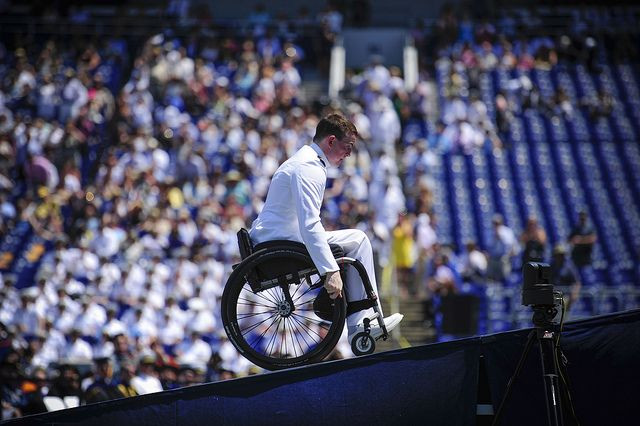Paralyzed Man Walks After Spinal Cord Injury Is Repaired With Nose Cells: End Of Paralysis Closer Than Ever

Some years ago, Darek Fidyka was stabbed multiple times in his back. One of the stabs cut a vital portion of his spinal cord, depleting him of any feeling or function from the chest down. But today, thanks to a radical procedure that took a patch of cells from his nose to bridge the injured nerves in his back, Fidyka is able to walk and live an independent life.
Fidyka’s story is astounding, but not an isolated incident. Even within the last year, neuroscientists have made huge leaps in the field of prosthetics, robotics, and spinal cord stimulation. Patients who were once relegated to their wheelchairs, with grim prognoses of ever walking again, now face a future that could involve the routine introduction of mechanical parts into a biological body.
Like its patients, science is taking small steps toward full recovery. The spinal cord is a highly sophisticated structure and the brain doubly so, which means getting the two to talk to one another is often a massive undertaking. Fidyka, for instance, must walk with the help of a guiding set of parallel bars and straps around his legs.
Still, the circuitry is there, said Professor Wagih El Masri, a consultant spinal injuries surgeon. "I have waited 40 years for something like this,” he told the BBC. And it’s not the only recent development.
In May, researchers from Newcastle University rolled out their method for restoring lost function to patients’ arms, hands, and legs. A person with a damaged spinal cord or motor cortex — the part of the brain in charge of movement — can’t move a paralyzed limb because the nerve signal never reaches the muscle. But with the team’s new device, which they plan to introduce within the next five years, that function will be restored.
The technology in use at Newcastle is the same that is being used at the University of Louisville and the University of California, Los Angeles: spinal cord stimulation. By supplementing the damaged areas with external electricity, people who are fully paralyzed can stand under their own weight and regain voluntary movement in the paralyzed limbs. Scientists don’t need to rely on regrowth of nerve cells to regain function, as they have found a set of dormant connections may still exist but which serve no function.
“The spinal stimulation could be reawakening these connections,” said V. Reggie Edgerton, UCLE professor of integrative biology and physiology. In April, Edgerton and his colleagues managed to restore limb function in four paralysis victims through their stimulation techniques. The findings gave hope to patients and neuroscientists around the world hoping to find simple and effective remedies to paralysis.
But the most recent findings involving Fidyka’s repaired back injury are perhaps the most groundbreaking. Four years after his initial injury, scientists transplanted a group of nasal cells known as olfactory ensheathing cells, or OECs, from Fidyka’s nose to the site of his injury. Prior research has found that OECs are some of the only cells capable of regenerating nerve fibers into the brain. On the injury site, they help spur the spinal nerves to grow enough so that they may bridge the gap.
Some three million people worldwide are living with a spinal injury, although data is often spotty and typically thought to be underestimated. One statistic, for example, claims approximately 1.9 percent of the U.S. population, or just over 5.5 million people, live with paralysis. And 1.3 million of those are from spinal cord injuries.
Fidyka, for his part, may simply be one of the first lucky ones to make the move back. “I knew it would be difficult, and it would last long,” he said in a BBC Panorama program, “To Walk Again.” “But I always shut out the thought that I could be in a wheelchair for the rest of my life, so I was always set to fight hard."
Published by Medicaldaily.com



























